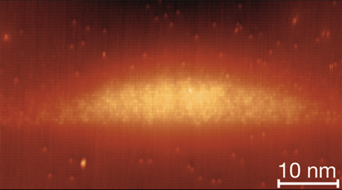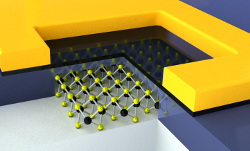|
Quantum Electronics and Computer Engineering - Research
Group leader: Prof. Dr. Kai Mueller
Our research focusses on the photonic quantum engineering of building blocks which are essential for all areas of quantum science and technology. This spans the entire range from fundamental quantum optical studies over the development of devices to demonstrator experiments. At its heart lies investigating the light-matter interaction in nanostructures in order to tailor it for emerging applications in quantum communication, quantum simulation, quantum metrology and quantum sensing. Specific research areas are:
Quantum optics with semiconductor nanostructures Tailoring light-matter interactions for quantum technologies requires a detailed understanding of the underlying quantum materials as well as the development of novel quantum-optical techniques and protocols. Therefore, we perform quantum-optical experiments on a variety of quantum emitters and optically-active spin qubits such as semiconductor quantum dots, color centers in diamond, quantum emitters in atomically thin transition metal dichalcogenides or rare-earth ions. Moreover, we develop novel quantum-optical techniques for example for the generation of non-classical light or the ultrafast optical coherent control of qubits.
 
Examples of investigated material systems. Left: Semiconductor Quantum Dot. Right: Monolayer transition metal dichalcogenide embedded in a microcapacitor.
Nanophotonics
In order to enhance the light-matter interaction and for efficient photonic interfacing of quantum emitters and optically-active spin qubits we embed them into nanophotonic resonators and circuits. Here, we actively perform research on engineering a variety of structures, such as photonic crystals, micropillar resonators, bullseye resonators and waveguides based on a variety of material systems such as III-V semiconductors, diamond and silicon nitride.
Modular Photonic Quantum Technologies
Photonic quantum technologies require the combination of several building blocks. To these ends, we are developing fully fiber-coupled quantum modules which can then conveniently combined to enable a variety of applications. Such modules are realized by building on the best suitable quantum materials and nanophotonic structures. Examples of the modules we are developing include non-classical light sources, spin-photon interfaces, single-photon detectors and quantum memories.
Integrated Quantum Photonic Circuits
In addition to modular distributed quantum technologies, different building blocks, such as sources, gates and detectors can also be integrated into chip-scale quantum photonic circuits to enable novel functionality. Here, a particular emphasis of our research is to investigate material systems, techniques and protocols which promise scalability.
Funding
We gratefully acknowledge funding from the Federal Ministry of Education and Research (BMBF), the German Science Foundation (DFG), the Munich Center for Quantum Science and Technology (MCQST), the Bavarian Academy of Sciences and Humanities (BAdW) and the European Union.
|



